Ethnic communities in London, their traditions and culture




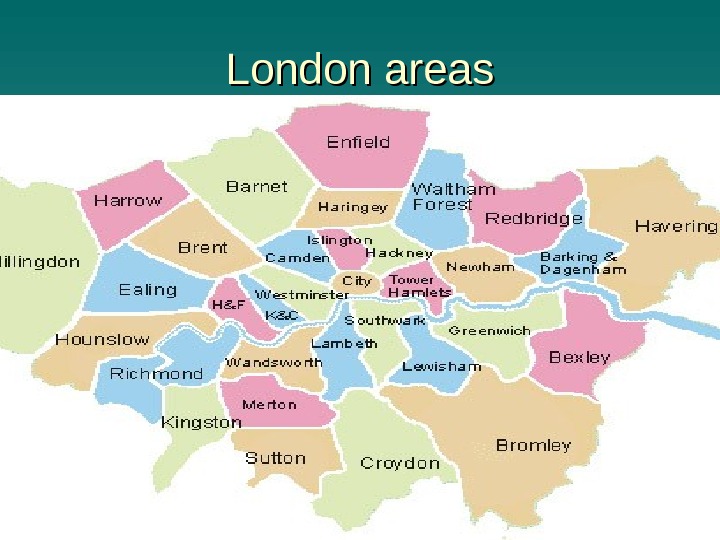



















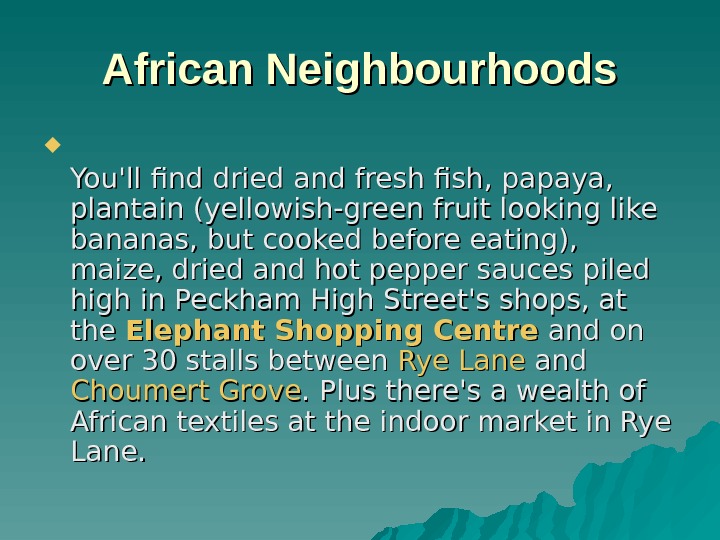








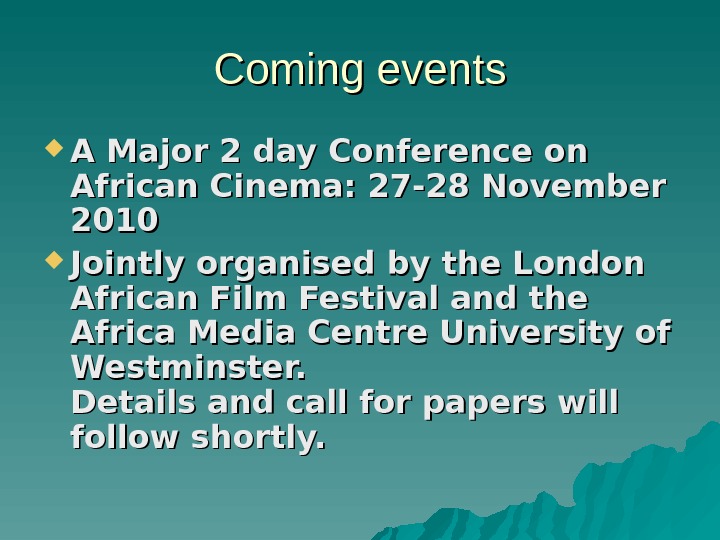







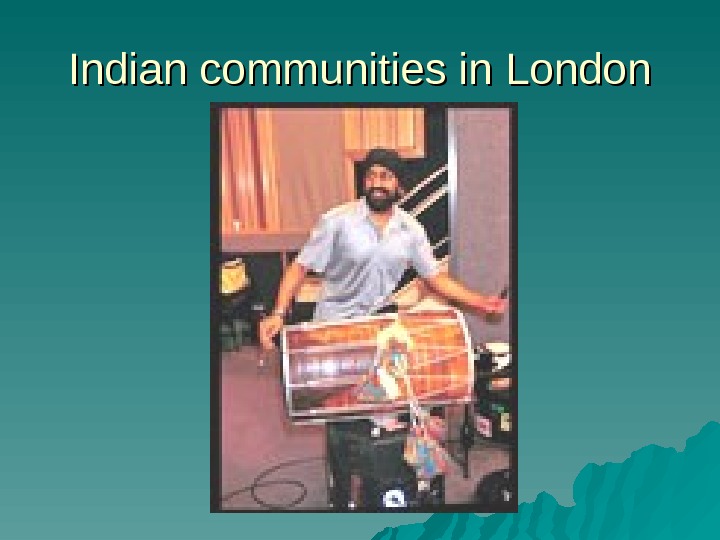










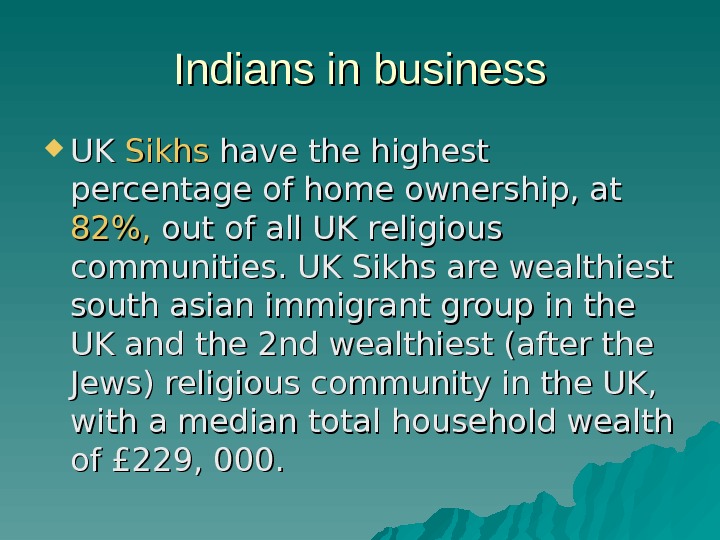
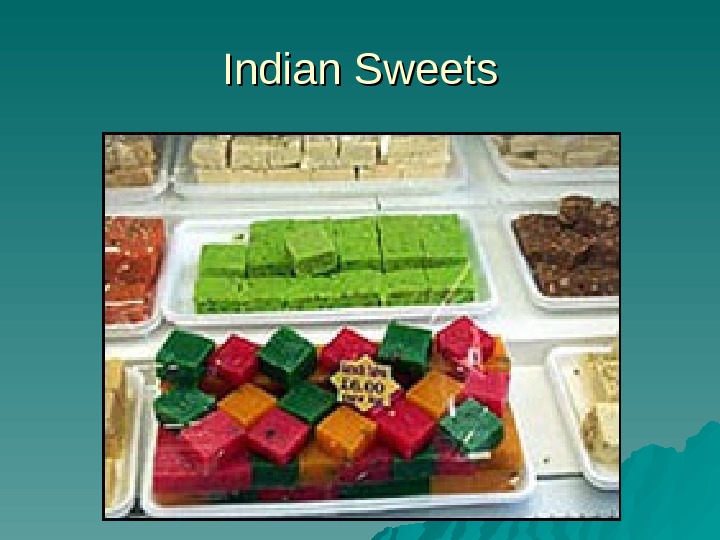
















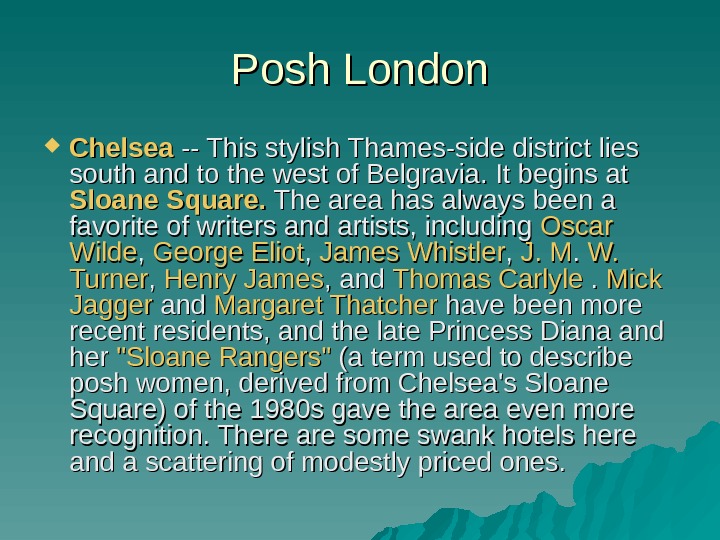










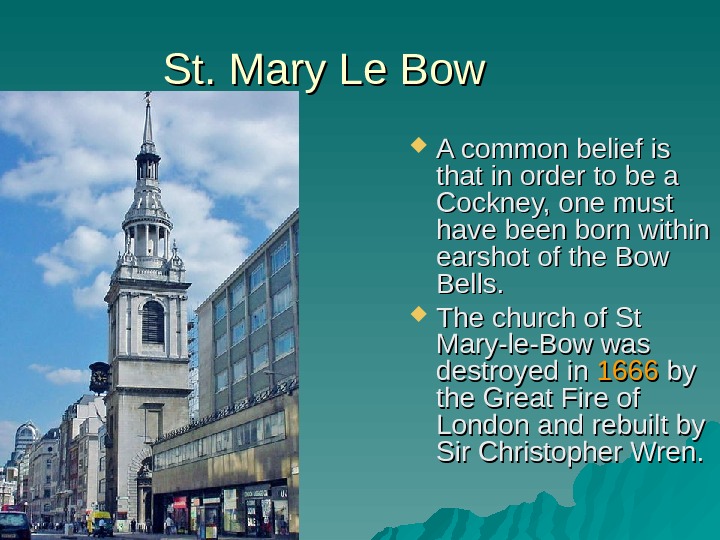

ethnic_communities_in_london.ppt
- Размер: 8 Mегабайта
- Количество слайдов: 82
Описание презентации Ethnic communities in London, their traditions and culture по слайдам
 Ethnic communities in London, their traditions and culture N. Sharova
Ethnic communities in London, their traditions and culture N. Sharova
 Ethnic communities in London with population of of 7, 355, 400 in 2006 claims to be one of the most ethnically diverse cities on earth. . OO ver 300 languages are spoken in it and more than 50 non-indigenous communities which have a population of more than 10, 000 live in the city.
Ethnic communities in London with population of of 7, 355, 400 in 2006 claims to be one of the most ethnically diverse cities on earth. . OO ver 300 languages are spoken in it and more than 50 non-indigenous communities which have a population of more than 10, 000 live in the city.
 Ethnic communities in London According to 2006 estimates, 30. 6 per cent of London’s population is from an ethnic minority (defined as non-white) and 42 per cent belong to groups other than white British. .
Ethnic communities in London According to 2006 estimates, 30. 6 per cent of London’s population is from an ethnic minority (defined as non-white) and 42 per cent belong to groups other than white British. .
 London areas
London areas
 London areas The administrative area of Greater London contains thirty-two London boroughs. . Inner London comprises twelve of these boroughs plus the City of London. . Outer London comprises the twenty remaining boroughs of Greater London. .
London areas The administrative area of Greater London contains thirty-two London boroughs. . Inner London comprises twelve of these boroughs plus the City of London. . Outer London comprises the twenty remaining boroughs of Greater London. .
 Irish London The Irish are one of the oldest and largest communities in London and as such, have had an enormous impact on the city. Look around, and you’ll see plenty of evidence of Irish culture and heritage everywhere you go. There has been an Irish community in London since medieval times There are 220, 000 Irish in London
Irish London The Irish are one of the oldest and largest communities in London and as such, have had an enormous impact on the city. Look around, and you’ll see plenty of evidence of Irish culture and heritage everywhere you go. There has been an Irish community in London since medieval times There are 220, 000 Irish in London
 Irish London Kilburn – » Little Eire » or «County Kilburn» as it’s often referred to – is home to one of the largest Irish-born communities outside Ireland itself. It is situated partly in Brent , and partly in Camden. In Kilburn you can buy the Irish papers, meet Irish friends, hear accents from all over the island and enjoy the area’s many restaurants and bars.
Irish London Kilburn – » Little Eire » or «County Kilburn» as it’s often referred to – is home to one of the largest Irish-born communities outside Ireland itself. It is situated partly in Brent , and partly in Camden. In Kilburn you can buy the Irish papers, meet Irish friends, hear accents from all over the island and enjoy the area’s many restaurants and bars.
 Irish London Leaving the Brent side of Kilburn and heading over the Camden border, via Quex Road, you’ll find the enormous Sacred Heart Church , the spiritual home of the area’s Irish Catholic community. Further into Camden and into Camden Town itself, the London Irish Centre has been at the heart of Camden Town’s Irish population for over 50 years.
Irish London Leaving the Brent side of Kilburn and heading over the Camden border, via Quex Road, you’ll find the enormous Sacred Heart Church , the spiritual home of the area’s Irish Catholic community. Further into Camden and into Camden Town itself, the London Irish Centre has been at the heart of Camden Town’s Irish population for over 50 years.
 London St. Patrick’s Day One of the most colourful events is celebrating the Irish patron saint’s day. St. Patrick’s Day is the 17 thth of of March. In 2010 they began celebrating on Sunday March, 14.
London St. Patrick’s Day One of the most colourful events is celebrating the Irish patron saint’s day. St. Patrick’s Day is the 17 thth of of March. In 2010 they began celebrating on Sunday March, 14.
 London St. Patrick’s Day This year the parade feature dd a giant St Patrick and the Snake float and a stunning Emerald Queen. The parade start eded at Piccadilly at 12 noon and move dd off along Lower Regent Street, Pall Mall East, Trafalgar Square and Whitehall before dispersing on Whitehall Place.
London St. Patrick’s Day This year the parade feature dd a giant St Patrick and the Snake float and a stunning Emerald Queen. The parade start eded at Piccadilly at 12 noon and move dd off along Lower Regent Street, Pall Mall East, Trafalgar Square and Whitehall before dispersing on Whitehall Place.
 London St. Patrick’s Day
London St. Patrick’s Day
 London St. Patrick’s Day The Mayor’s St Patrick’s Day Parade and Festival will take place on Sunday 14 March 2010 , and is likely to be one of London’s liveliest celebrations of the year. Over 100, 000 people attended the event last year. The parade — a colourful array of floats, marching bands and groups representing the Irish Counties — proceed eded through central London from Green Park to Trafalgar Square from midday.
London St. Patrick’s Day The Mayor’s St Patrick’s Day Parade and Festival will take place on Sunday 14 March 2010 , and is likely to be one of London’s liveliest celebrations of the year. Over 100, 000 people attended the event last year. The parade — a colourful array of floats, marching bands and groups representing the Irish Counties — proceed eded through central London from Green Park to Trafalgar Square from midday.
 London St. Patrick’s Day
London St. Patrick’s Day
 Russians in London There are 250. 000 Russian-Speaking People in Greater London. . The Association of Russian-Speaking Communities, which was established in London in December 2002 , , is the first organization of its kind with mass membership. It intends, among other things, to represent actively the interests of emigrants from the former USSR in the countries where they presently live. The organisers of this enterprise are the founder of of International Russian House charitable fund Vladimir Voronov, and the head of the Slavonic Bazaar company group Vladimir Bobkov.
Russians in London There are 250. 000 Russian-Speaking People in Greater London. . The Association of Russian-Speaking Communities, which was established in London in December 2002 , , is the first organization of its kind with mass membership. It intends, among other things, to represent actively the interests of emigrants from the former USSR in the countries where they presently live. The organisers of this enterprise are the founder of of International Russian House charitable fund Vladimir Voronov, and the head of the Slavonic Bazaar company group Vladimir Bobkov.
 Russians in London Courier is Britain’s first Russian language newspaper. Since it was launched in 1994 , it’s been enjoying reputation of the most reliable source of information for the Russian speaking community in the UK.
Russians in London Courier is Britain’s first Russian language newspaper. Since it was launched in 1994 , it’s been enjoying reputation of the most reliable source of information for the Russian speaking community in the UK.
 Russians in London Russian tradition in Trafalgar Square The Maslenitsa Russian Festival London event brings authentic Russian culture to London in a unique cultural event, now being held for the fourth consecutive year. Taking place on 26 th February, the festival falls near Lent and traditional springtime celebrations will feature throughout, including music, dancing and plenty of blinis.
Russians in London Russian tradition in Trafalgar Square The Maslenitsa Russian Festival London event brings authentic Russian culture to London in a unique cultural event, now being held for the fourth consecutive year. Taking place on 26 th February, the festival falls near Lent and traditional springtime celebrations will feature throughout, including music, dancing and plenty of blinis.
 The Maslenitsa Russian Festival
The Maslenitsa Russian Festival
 Maslenitsa at Trafalgar Square
Maslenitsa at Trafalgar Square

 African London
African London
 African London’s African population is now far bigger than its Caribbean one, which isn’t surprising. . In North Africa there are communities of people originating from east, west and southern Africa. Indeed, when we talk about Africa, we’re talking about a continent that is home to an almost infinite variety of cultural influences, many of which have made their mark on London.
African London’s African population is now far bigger than its Caribbean one, which isn’t surprising. . In North Africa there are communities of people originating from east, west and southern Africa. Indeed, when we talk about Africa, we’re talking about a continent that is home to an almost infinite variety of cultural influences, many of which have made their mark on London.
 African London
African London
 African London Almost 80 per cent of all Britain’s African communities live in London, compared with 50 per cent of the Caribbean community. The areas of Peckham and Elephant & Castle (South East London) are synonymous with West African culture, particularly Nigerian.
African London Almost 80 per cent of all Britain’s African communities live in London, compared with 50 per cent of the Caribbean community. The areas of Peckham and Elephant & Castle (South East London) are synonymous with West African culture, particularly Nigerian.
 African Neighbourhoods You’ll find dried and fresh fish, papaya, plantain (yellowish-green fruit looking like bananas, but cooked before eating), maize, dried and hot pepper sauces piled high in Peckham High Street’s shops, at the Elephant Shopping Centre and on over 30 stalls between Rye Lane and Choumert Grove. Plus there’sa wealth of African textiles at the indoor market in Rye Lane.
African Neighbourhoods You’ll find dried and fresh fish, papaya, plantain (yellowish-green fruit looking like bananas, but cooked before eating), maize, dried and hot pepper sauces piled high in Peckham High Street’s shops, at the Elephant Shopping Centre and on over 30 stalls between Rye Lane and Choumert Grove. Plus there’sa wealth of African textiles at the indoor market in Rye Lane.
 African London
African London
 Tottenham’s West Green Road at the bottom end of Tottenham High Road has its own very particular character, driven by the local African and Caribbean population. A cluster of specialist hairdressers and eateries sit cheek by jowl along the West Green Road.
Tottenham’s West Green Road at the bottom end of Tottenham High Road has its own very particular character, driven by the local African and Caribbean population. A cluster of specialist hairdressers and eateries sit cheek by jowl along the West Green Road.
 Leytonstone ( ( North East) Since the mid-1990 s, many people from Kenya have come to London to study. As a result, Kenyan nightclubs like Club Desire and Lincoln’s have sprung up and brought with them a following of Kenyans, Zimbabweans and Tanzanians. Come here for traditional and contemporary African music.
Leytonstone ( ( North East) Since the mid-1990 s, many people from Kenya have come to London to study. As a result, Kenyan nightclubs like Club Desire and Lincoln’s have sprung up and brought with them a following of Kenyans, Zimbabweans and Tanzanians. Come here for traditional and contemporary African music.

 Dalston and Hackney are 2 of the most multicultural areas of the North East London, with sizeable African communities. Ridley Road Market in Dalston bursts with African food, knick-knacks and textiles while Hackney’s Mare Street boasts the famous Hackney Empire , a venue committed to a wide range of comedy and theatre that reflects the area’s diversity.
Dalston and Hackney are 2 of the most multicultural areas of the North East London, with sizeable African communities. Ridley Road Market in Dalston bursts with African food, knick-knacks and textiles while Hackney’s Mare Street boasts the famous Hackney Empire , a venue committed to a wide range of comedy and theatre that reflects the area’s diversity.
 The Africa Centre Since its creation in 1961 leading African artists, writers, academics, politicians and musicians shared their visions of Africa with the audiences.
The Africa Centre Since its creation in 1961 leading African artists, writers, academics, politicians and musicians shared their visions of Africa with the audiences.
 The Africa Centre
The Africa Centre
 Africa Day (an annual festival) In In 2008 Africa Day was celebrated on Bank Holiday Monday, May 26. . TT o celebrate Africa Day 2008, Trafalgar Square play eded host to some of Africa’s best loved music artists from many African nations on May 26 from 1 -8 pm
Africa Day (an annual festival) In In 2008 Africa Day was celebrated on Bank Holiday Monday, May 26. . TT o celebrate Africa Day 2008, Trafalgar Square play eded host to some of Africa’s best loved music artists from many African nations on May 26 from 1 -8 pm
 Coming events A Major 2 day Conference on African Cinema: 27 -28 November 2010 Jointly organised by the London African Film Festival and the Africa Media Centre University of Westminster. Details and call for papers will follow shortly.
Coming events A Major 2 day Conference on African Cinema: 27 -28 November 2010 Jointly organised by the London African Film Festival and the Africa Media Centre University of Westminster. Details and call for papers will follow shortly.
 Notting Hill Carnival is an annual event which since 1966 has taken place on the streets of Notting Hill , , London , , UKUK each August, over two days (the August bank holiday Monday and the day beforehand). It is led by members of the Trinidad and Tobago Caribbean population, many of whom have lived in the area since the 1950 s. The carnival attracted up to 2 million people in the past, making it the second largest street festival in the world after the Trinidad andand Tobago Carnival held in that country.
Notting Hill Carnival is an annual event which since 1966 has taken place on the streets of Notting Hill , , London , , UKUK each August, over two days (the August bank holiday Monday and the day beforehand). It is led by members of the Trinidad and Tobago Caribbean population, many of whom have lived in the area since the 1950 s. The carnival attracted up to 2 million people in the past, making it the second largest street festival in the world after the Trinidad andand Tobago Carnival held in that country.
 Notting Hill Carnival
Notting Hill Carnival
 Notting Hill Carnival
Notting Hill Carnival
 Notting Hill Carnival
Notting Hill Carnival
 Notting Hill Carnival
Notting Hill Carnival
 Notting Hill Carnival
Notting Hill Carnival
 Notting Hill Carnival Starting its life as a local festival set up by the West Indian community of the Notting Hill area, it has now become a full-blooded Caribbean carnival, attracting millions of visitors from all over the globe. With many astonishing floats and the sounds of the traditional steel drum bands, the Notting Hill Carnival is London’s most exciting annual event.
Notting Hill Carnival Starting its life as a local festival set up by the West Indian community of the Notting Hill area, it has now become a full-blooded Caribbean carnival, attracting millions of visitors from all over the globe. With many astonishing floats and the sounds of the traditional steel drum bands, the Notting Hill Carnival is London’s most exciting annual event.
 Indian communities in London
Indian communities in London
 Indian London Indians are London’s largest non-white ethnic minority group, with a population of around 500, 000 (which is more than the number of Indians in the Netherlands , , Germany , , France , , Italy and Portugal combined). The largest communities can be found in West London , with substantial populations in East, South and North London.
Indian London Indians are London’s largest non-white ethnic minority group, with a population of around 500, 000 (which is more than the number of Indians in the Netherlands , , Germany , , France , , Italy and Portugal combined). The largest communities can be found in West London , with substantial populations in East, South and North London.
 London’s Indian community Many members of London’s Indian community can trace their ancestry to the Indian states of Punjab and Gujarat , , Rajastan , , Uttar Pradesh , , Maharashtra , , West Bengal , , Andhra Pradesh and Bihar. A significant number of Indians in London come from East Africa , the Caribbean , and Southern Africa. .
London’s Indian community Many members of London’s Indian community can trace their ancestry to the Indian states of Punjab and Gujarat , , Rajastan , , Uttar Pradesh , , Maharashtra , , West Bengal , , Andhra Pradesh and Bihar. A significant number of Indians in London come from East Africa , the Caribbean , and Southern Africa. .
 London’s Indian community British Indians have long been one of London’s largest ethnic minority groups and in 2007 over 500, 000 Indians were residing in London (this excludes people of half or less Indian origin). Indians have existed in the British capital for generations and come from all walks of life.
London’s Indian community British Indians have long been one of London’s largest ethnic minority groups and in 2007 over 500, 000 Indians were residing in London (this excludes people of half or less Indian origin). Indians have existed in the British capital for generations and come from all walks of life.
 Indians in London Lakshmi Mittal is currently Britain’s richest man and the fifth richest man in the world. The Mittal family owns 43% of Arcelor-Mittal , the world’s largest steel manufacturer, which was known as Mittal Steel Company before the merger with Arcelor. He was listed in the Forbes List of Billionaires (2006) as the richest Indian and the fifth richest man in the world with an estimated fortune of $55. 0 billion and, according to the Sunday Times Rich List 2006 , is the richest in the UK, with a net worth of £ 29 billion. The Financial Times named Mittal its 2006 Person of the Year.
Indians in London Lakshmi Mittal is currently Britain’s richest man and the fifth richest man in the world. The Mittal family owns 43% of Arcelor-Mittal , the world’s largest steel manufacturer, which was known as Mittal Steel Company before the merger with Arcelor. He was listed in the Forbes List of Billionaires (2006) as the richest Indian and the fifth richest man in the world with an estimated fortune of $55. 0 billion and, according to the Sunday Times Rich List 2006 , is the richest in the UK, with a net worth of £ 29 billion. The Financial Times named Mittal its 2006 Person of the Year.
 London’s Indian community
London’s Indian community
 London’s Indian community Regions with significant Indian population in in London are: Southall , , Wembley , , Hounslow , , Brent , , Croydon , , Redbridge , , Ealing , , Barnet , , Tooting , , Harrow
London’s Indian community Regions with significant Indian population in in London are: Southall , , Wembley , , Hounslow , , Brent , , Croydon , , Redbridge , , Ealing , , Barnet , , Tooting , , Harrow

 Indians in West London In West London, close to the Heathrow Airport , resides one of the UK’s largest Indian communities. Southall is the most famous Punjabi community outside of South Asia. It has an Indian/Pakistani percentage of 75%. Southall Broadway is popular for its Indian shops, cinemas and restaurants. Most of Southall’s residents are Sikhs. Another famous Indian residential area is the London Borough of Hounslow. Wembley is London’s Gujarati capital. Wembley’s main religion is Hinduism, although there is a sizable Gujarati Muslim community and a small Sikh community. Harrow ranks number 3 at London’s borough in Indian communities. The majority of Indians in Harrow are Hindus.
Indians in West London In West London, close to the Heathrow Airport , resides one of the UK’s largest Indian communities. Southall is the most famous Punjabi community outside of South Asia. It has an Indian/Pakistani percentage of 75%. Southall Broadway is popular for its Indian shops, cinemas and restaurants. Most of Southall’s residents are Sikhs. Another famous Indian residential area is the London Borough of Hounslow. Wembley is London’s Gujarati capital. Wembley’s main religion is Hinduism, although there is a sizable Gujarati Muslim community and a small Sikh community. Harrow ranks number 3 at London’s borough in Indian communities. The majority of Indians in Harrow are Hindus.
 The spheres of Indian contributions to life in London Indian people have made a huge contribution to business , , to cooking, To medical practices, To literature, To To introducing Bollywood films and Bhangra music to the UK UK cc apital.
The spheres of Indian contributions to life in London Indian people have made a huge contribution to business , , to cooking, To medical practices, To literature, To To introducing Bollywood films and Bhangra music to the UK UK cc apital.
 Bollywood is an informal name for the Indian film industry, based on the names Hollywood and Bombay, where most Indian films are made. Bhangra is a style of popular music in the UK that combines western music with traditional music from India.
Bollywood is an informal name for the Indian film industry, based on the names Hollywood and Bombay, where most Indian films are made. Bhangra is a style of popular music in the UK that combines western music with traditional music from India.
 Indians in business UK UK Sikhs have the highest percentage of home ownership, at 82%, out of all UK religious communities. UK Sikhs are wealthiest south asian immigrant group in the UK and the 2 nd wealthiest (after the Jews) religious community in the UK, with a median total household wealth of £ 229, 000.
Indians in business UK UK Sikhs have the highest percentage of home ownership, at 82%, out of all UK religious communities. UK Sikhs are wealthiest south asian immigrant group in the UK and the 2 nd wealthiest (after the Jews) religious community in the UK, with a median total household wealth of £ 229, 000.
 Indian Sweets
Indian Sweets
 Indian food in London Indian cookery expert Madhur Jaffrey Some famous Indian restaurants in London are: Amaya, Bombay Bicycle, Babur, Cinnamon Club
Indian food in London Indian cookery expert Madhur Jaffrey Some famous Indian restaurants in London are: Amaya, Bombay Bicycle, Babur, Cinnamon Club

 Indian literature in English Well-known British Asian writers include: Salman Rushdie, Gurinder Chadha, Hanif Kureshi, Monica Ali, Meera Syal, Gautam Malkani, and Raman Mundair
Indian literature in English Well-known British Asian writers include: Salman Rushdie, Gurinder Chadha, Hanif Kureshi, Monica Ali, Meera Syal, Gautam Malkani, and Raman Mundair
 Medicine Indian people have made their mark on many aspects of London life, participating in all levels of politics, business and cultural initiatives. They also contribute substantially to the health of Londoners via medical practices and the NHS (National Health Service).
Medicine Indian people have made their mark on many aspects of London life, participating in all levels of politics, business and cultural initiatives. They also contribute substantially to the health of Londoners via medical practices and the NHS (National Health Service).
 Pakistanis Around 70%70% of British Pakistanis trace their roots to a place that is now under water. In the late 1950 s, when the contract to build a dam at Mirpur in southern Kashmir was awarded to a British company, the British government greased the wheels by promising passports and employment to the many thousands of Mirpuris whose homes were about to be flooded for ever. Shortly afterwards, thousands of farmers, many of whom had never even planned to move house, set off to become steel smelters and cloth weavers in the factories of Birmingham and the industrial north. It was the first large-scale movement of Muslims to Britain. UU p to 8, 000 of them ended up in Woking.
Pakistanis Around 70%70% of British Pakistanis trace their roots to a place that is now under water. In the late 1950 s, when the contract to build a dam at Mirpur in southern Kashmir was awarded to a British company, the British government greased the wheels by promising passports and employment to the many thousands of Mirpuris whose homes were about to be flooded for ever. Shortly afterwards, thousands of farmers, many of whom had never even planned to move house, set off to become steel smelters and cloth weavers in the factories of Birmingham and the industrial north. It was the first large-scale movement of Muslims to Britain. UU p to 8, 000 of them ended up in Woking.
 Pakistanis The first generation of Pakistanis in Woking often found jobs at the British Aerospace plant in Weybridge (where they worked on Concorde, among other things) and in other local plastics and rubber factories, now defunct. Through the 60 s and 70 s, a steady trickle of families abandoned the north and followed them, encouraged by reports of more work and better pay. When the price of Woking houses began to exceed the reach of Bradford wages, the trickle stopped.
Pakistanis The first generation of Pakistanis in Woking often found jobs at the British Aerospace plant in Weybridge (where they worked on Concorde, among other things) and in other local plastics and rubber factories, now defunct. Through the 60 s and 70 s, a steady trickle of families abandoned the north and followed them, encouraged by reports of more work and better pay. When the price of Woking houses began to exceed the reach of Bradford wages, the trickle stopped.
 Chinese London The Chinese community is one of London’s oldest communities. Britain began trading with China in the 17 th century and Chinese sailors had reached London on board East India Company ships by 1782. This small group lived around Pennyfields and Limehouse Causeway near the docks. By the end of the 19 th century , the Chinese dock community in London numbered over 500500 ; primarily single men and some married British women.
Chinese London The Chinese community is one of London’s oldest communities. Britain began trading with China in the 17 th century and Chinese sailors had reached London on board East India Company ships by 1782. This small group lived around Pennyfields and Limehouse Causeway near the docks. By the end of the 19 th century , the Chinese dock community in London numbered over 500500 ; primarily single men and some married British women.
 Chinese London Today over 78, 000 Chinese people of diverse origins live in London. The majority of these can trace their roots to Hong Kong. . Others come from mainland China , , Malaysia, Vietnam and Singapore.
Chinese London Today over 78, 000 Chinese people of diverse origins live in London. The majority of these can trace their roots to Hong Kong. . Others come from mainland China , , Malaysia, Vietnam and Singapore.
 Chinese London Chinatown has since been transformed by Westminster City Council, to become a major tourist attraction and a cultural focal point of the Chinese community in London. More recent arrivals to the area have been mostly Fujian immigrants from mainland China. Chinese Community Centres, schools and churches offer key services. They provide meals and Chinese satellite TV access for the elderly, as well as sports facilities, language lessons and housing advice.
Chinese London Chinatown has since been transformed by Westminster City Council, to become a major tourist attraction and a cultural focal point of the Chinese community in London. More recent arrivals to the area have been mostly Fujian immigrants from mainland China. Chinese Community Centres, schools and churches offer key services. They provide meals and Chinese satellite TV access for the elderly, as well as sports facilities, language lessons and housing advice.
 Posh London Knightsbridge (where Harrods is) is posh. Kensington (where Princess Diana’s palace is/was) is posh. Mayfair is posh. Notting Hill is trendy posh.
Posh London Knightsbridge (where Harrods is) is posh. Kensington (where Princess Diana’s palace is/was) is posh. Mayfair is posh. Notting Hill is trendy posh.
 Posh London Eaton Square , SW 1 This is the most expensive address in the world per sq metre. Roger Moore and Sean Connery are residents here. This is Located in Belgravia. Chester Square , which is very close by is a very close second, Margaret Thatcher and Roman Abramovich have houses there. All in all, Belgravia, Mayfair, Knightsbridge and Kensington are the Top 4.
Posh London Eaton Square , SW 1 This is the most expensive address in the world per sq metre. Roger Moore and Sean Connery are residents here. This is Located in Belgravia. Chester Square , which is very close by is a very close second, Margaret Thatcher and Roman Abramovich have houses there. All in all, Belgravia, Mayfair, Knightsbridge and Kensington are the Top 4.
 Posh London Knightsbridge — One of London’s most fashionable neighborhoods, Knightsbridge is a top residential, hotel, and shopping district just south of Hyde Park. Harrods on Brompton Road is its chief attraction. Founded in 1901, Harrods has been called «the Notre Dame of department stores. «
Posh London Knightsbridge — One of London’s most fashionable neighborhoods, Knightsbridge is a top residential, hotel, and shopping district just south of Hyde Park. Harrods on Brompton Road is its chief attraction. Founded in 1901, Harrods has been called «the Notre Dame of department stores. «
 Posh London Belgravia — South of Knightsbridge, this area has long been an aristocratic quarter of London, rivaling Mayfair in grandeur. Although it reached its pinnacle of prestige during the reign of Queen Victoria, the Duke and Duchess of Westminster still live at Eaton Square, and Belgravia remains a hot area for chic hotels. The neighborhood’s centerpiece is Belgrave Square. When town houses were built from 1825 to 1835, aristocrats followed — the Duke of Connaught, the Earl of Essex, and even Queen Victoria’s mother.
Posh London Belgravia — South of Knightsbridge, this area has long been an aristocratic quarter of London, rivaling Mayfair in grandeur. Although it reached its pinnacle of prestige during the reign of Queen Victoria, the Duke and Duchess of Westminster still live at Eaton Square, and Belgravia remains a hot area for chic hotels. The neighborhood’s centerpiece is Belgrave Square. When town houses were built from 1825 to 1835, aristocrats followed — the Duke of Connaught, the Earl of Essex, and even Queen Victoria’s mother.
 Posh London
Posh London

 Posh London Kensington is a fashionable neighborhood. Southeast of Kensington Gardens and Earl’s Court, primarily residential South Kensington is often called «museumland» because it’s dominated by a complex of museums and colleges, including the Natural History Museum, the Victoria and Albert Museum, and the Science Museum; nearby is Royal Albert Hall. South Kensington boasts some fashionable restaurants and town-house hotels. One of the neighborhood’s curiosities is the Albert Memorial, completed in 1872 by Sir George Gilbert Scott. .
Posh London Kensington is a fashionable neighborhood. Southeast of Kensington Gardens and Earl’s Court, primarily residential South Kensington is often called «museumland» because it’s dominated by a complex of museums and colleges, including the Natural History Museum, the Victoria and Albert Museum, and the Science Museum; nearby is Royal Albert Hall. South Kensington boasts some fashionable restaurants and town-house hotels. One of the neighborhood’s curiosities is the Albert Memorial, completed in 1872 by Sir George Gilbert Scott. .
 Posh London Chelsea — This stylish Thames-side district lies south and to the west of Belgravia. It begins at Sloane Square. The area has always been a favorite of writers and artists, including Oscar Wilde , , George Eliot , , James Whistler , , J. M. . W. W. Turner , , Henry James , and Thomas Carlyle . . Mick Jagger and Margaret Thatcher have been more recent residents, and the late Princess Diana and her «Sloane Rangers» (a term used to describe posh women, derived from Chelsea’s Sloane Square) of the 1980 s gave the area even more recognition. There are some swank hotels here and a scattering of modestly priced ones.
Posh London Chelsea — This stylish Thames-side district lies south and to the west of Belgravia. It begins at Sloane Square. The area has always been a favorite of writers and artists, including Oscar Wilde , , George Eliot , , James Whistler , , J. M. . W. W. Turner , , Henry James , and Thomas Carlyle . . Mick Jagger and Margaret Thatcher have been more recent residents, and the late Princess Diana and her «Sloane Rangers» (a term used to describe posh women, derived from Chelsea’s Sloane Square) of the 1980 s gave the area even more recognition. There are some swank hotels here and a scattering of modestly priced ones.
 Posh London The Chelsea Flower Show is a garden show and takes place every year on five days in May by the Royal Horticultural Society in the grounds of the Royal Hospital Chelsea in Chelsea, it shows the best garden designs and horticulture, and shows ideas to take for new gardens designs.
Posh London The Chelsea Flower Show is a garden show and takes place every year on five days in May by the Royal Horticultural Society in the grounds of the Royal Hospital Chelsea in Chelsea, it shows the best garden designs and horticulture, and shows ideas to take for new gardens designs.
 The Chelsea Flower Show is attended by 157, 000 visitors each year. The number is limited by the capacity of the 11 -acre ground. Tickets must be purchased in advance. The show’s become an important venue for watching emerging gardening trends. New plants are launched at the show and the popularity of older varieties revived before the eyes of the horticultural world. It’s the garden design equivalent of a catwalk at a fashion show.
The Chelsea Flower Show is attended by 157, 000 visitors each year. The number is limited by the capacity of the 11 -acre ground. Tickets must be purchased in advance. The show’s become an important venue for watching emerging gardening trends. New plants are launched at the show and the popularity of older varieties revived before the eyes of the horticultural world. It’s the garden design equivalent of a catwalk at a fashion show.
 The Chelsea Flower Show Standard tickets to Chelsea Flower show are selling out fast. But you can still gain entry to the show with a Prestige Hospitality Package (£ 170), which is available to members of the general public.
The Chelsea Flower Show Standard tickets to Chelsea Flower show are selling out fast. But you can still gain entry to the show with a Prestige Hospitality Package (£ 170), which is available to members of the general public.



 Different gardening utilities on sale…
Different gardening utilities on sale…
 Garden Gnomes
Garden Gnomes
 Gardening is the art that uses flowers and plants as paint, and the soil and sky as canvas. Elizabeth Murray
Gardening is the art that uses flowers and plants as paint, and the soil and sky as canvas. Elizabeth Murray
 Common Londoners The term Cockney has both geographical and linguistic associations. Geographically and culturally, it often refers to working class Londoners, particularly those in the East End. Linguistically, it refers to the form of English spoken by this group.
Common Londoners The term Cockney has both geographical and linguistic associations. Geographically and culturally, it often refers to working class Londoners, particularly those in the East End. Linguistically, it refers to the form of English spoken by this group.
 St. Mary Le Bow A common belief is that in order to be a Cockney, one must have been born within earshot of the Bow Bells. The church of St Mary-le-Bow was destroyed in 1666 by by the Great Fire of London and rebuilt by Sir Christopher Wren.
St. Mary Le Bow A common belief is that in order to be a Cockney, one must have been born within earshot of the Bow Bells. The church of St Mary-le-Bow was destroyed in 1666 by by the Great Fire of London and rebuilt by Sir Christopher Wren.
 Common Londoners A costume associated with Cockneys is that of the pearly King (or pearly Queen ) worn by London ersers who sew thousands of pearl buttons onto their clothing in elaborate and creative patterns.
Common Londoners A costume associated with Cockneys is that of the pearly King (or pearly Queen ) worn by London ersers who sew thousands of pearl buttons onto their clothing in elaborate and creative patterns.

